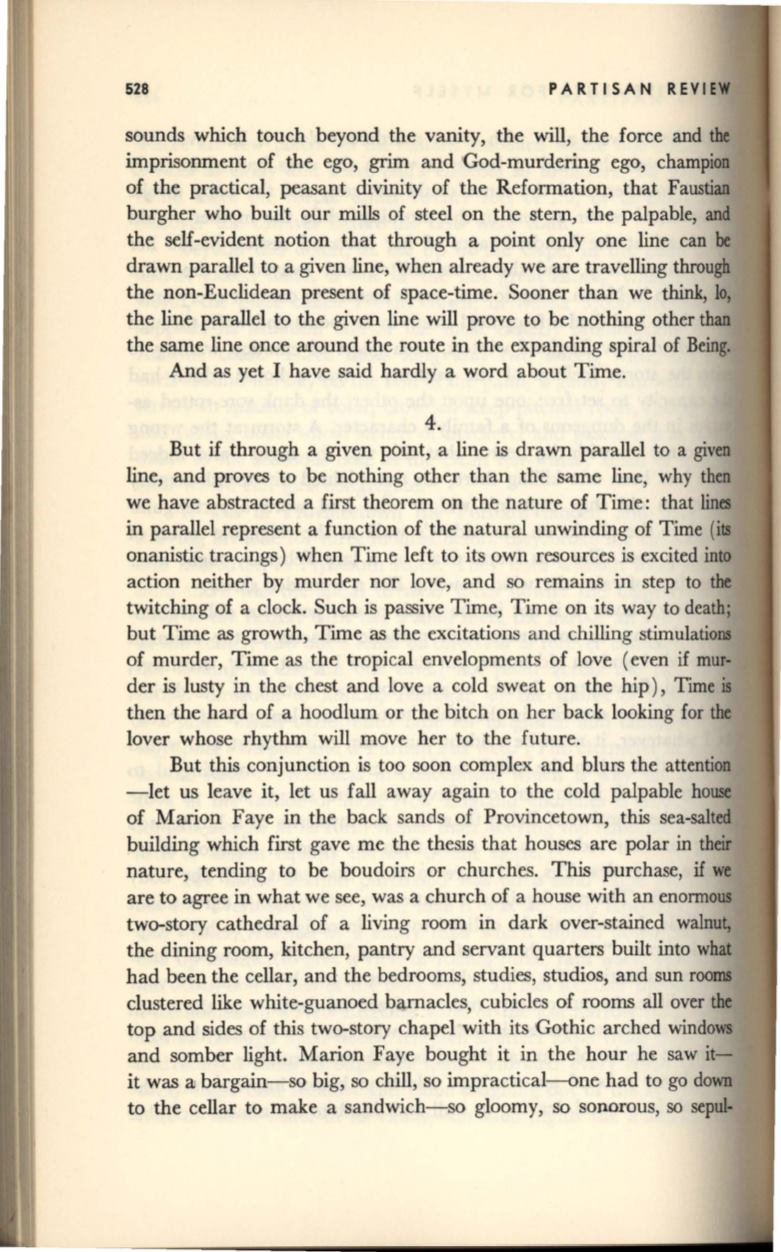
528
PAR TIS AN REV
lEW
sounds which touch beyond the vanity, the will, the force and the
imprisonment of the ego, grim and God-murdering ego, champion
of the practical, peasant divinity of the Reformation, that Faustian
burgher who built our mills of steel on the stem, the palpable, and
the self-evident notion that through a point only one line can
be
drawn parallel to a given line, when already we are travelling through
the non-Euclidean present of space-time. Sooner than we think, 10,
the line parallel to the given line will prove to be nothing other than
the same line once around the route in the expanding spiral of Being.
And as yet I have said hardly a word about Time.
4.
But if through a given point, a line is drawn parallel to a given
line, and proves to be nothing other than the same line, why then
we have abstracted a first theorem on the nature of Time: that lines
in parallel represent a function of the natural unwinding of Time (its
onanistic tracings) when Time left to its own resources is excited into
action neither by murder nor love, and so remains in step to
the
twitching of a clock. Such is passive Time, Time on its way to death;
but Time as growth, Time as the excitations and chilling stimulations
of murder, Time as the tropical envelopments of love (even if mur–
der is lusty in the chest and love a cold sweat on the hip), Time
is
then the hard of a hoodlum or the bitch on her back looking for the
lover whose rhythm will move her to the future.
But this conjunction is too soon complex and blurs the attention
-let us leave it, let us fall away again to the cold palpable house
of Marion Faye in the back sands of Provincetown, this sea-salted
building which first gave me the thesis that houses are polar in their
nature, tending to be boudoirs or churches. This purchase,
if
we
are to agree in what we see, was a church of a house with an enormous
two-story cathedral of a living room in dark over-stained walnut,
the dining room, kitchen, pantry and servant quarters built into what
had been the cellar, and the bedrooms, studies, studios, and sun rooms
clustered like white-guanoed barnacles, cubicles of rooms allover the
top and sides of this two-story chapel with its Gothic arched windows
and somber light. Marion Faye bought it in the hour he saw it–
it was a bargain-so big, so chill, so impractical-one had to go down
to the cellar to make a sandwich-so gloomy, so sonorous, so sepul-


